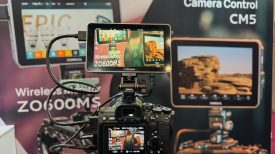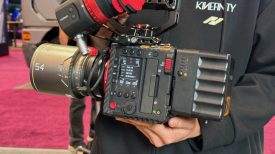When Sony launched their trio of G Master E-mount lenses they promised both superlative optical performance and smooth bokeh. Finally the company has native E-mount fast aperture full-frame premium lenses to rival, or better, those from Canon, Nikon and Sigma. For many stills shooters they should be a dream come true, but what about for video use?
Like many others I had been hoping that these lenses would have directly coupled mechanical manual focussing, perhaps of the kind seen on the Tokina 11-16mm. At the very least I would have liked to have seen a hybrid focus system like the one on the Sony 28-135mm f4 G power zoom lens. As it turned out, the new lenses have neither of these. Instead they have fly-by-wire systems with unmarked, freely rotating manual focus rings.
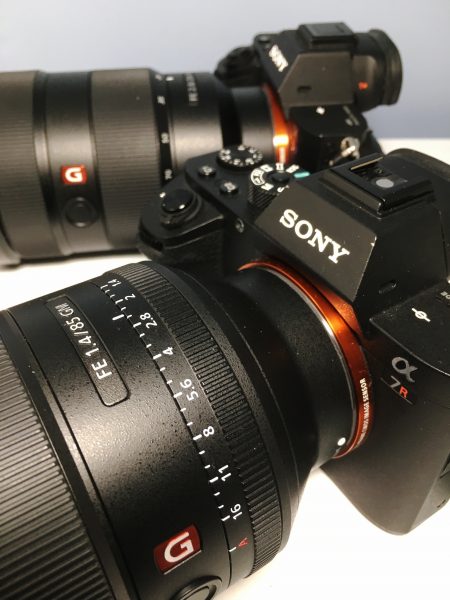
Fly-by-wire focus systems, commonly found on other Sony stills lenses, have a reputation for being hard to manually focus and I dread using them for video. I often miss my focus by a few centimetres when trying to track a subject with them due to their somewhat unpredictable response. This shortcoming is one of my major criticisms of the otherwise useful 18-105mm f4 kit lens from the FS5. When Sony told me that the fly-by-wire focus system in the G Master lenses had been improved I was very curious.
This week Sony lent me both the 24-70mm f2.8 and 85mm f1.4 G Masters (apparently the 70-200mm f2.8 isn’t available to reviewers yet). I really wanted to see how these lenses performed with the a7S II. Could I really use these for run-and-gun style shooting?
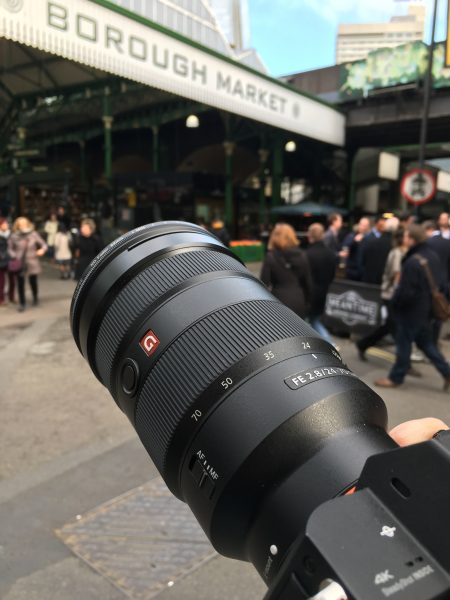
I went down to Borough market in London and shot handheld for several hours, getting myself used to how the lenses perform. I shot in 4K 25P at 100Mbps internally to SD card. I shot mainly with the 24-70mm f2.8, with the occasional tighter one on the 85mm f1.4. I tried to keep the aperture wide open if possible and used variable ND filters on both lenses. (The 85mm has a 77mm filter thread and the 24-70mm a 82mm).
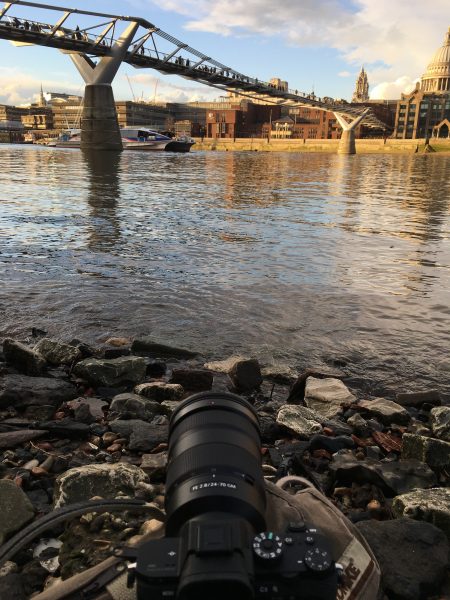
All the shots in the video were done manually. There are an excessive number of focus pulls just because I was testing out how the lens responds. Incidentally, autofocus support for the lenses has not yet been added to many of Sony’s cameras. My a7R II had to be used in manual focus even for stills.
Most of the shots in the video are pretty much as they came out of the camera. On a couple there is a bit of warp stabilisation and a few are slightly soft, which I put down to user error by me, and not the lens. I shot Cine profile and graded the shots lightly using Filmconvert, with no film grain effect added.
At the end of the day I was won over – especially by the 85mm. What Sony have somehow managed to do is improve the fly-by-wire system focus to the point where it now feels and acts much more naturally – more like the ones found on Canon L and Nikon lenses (which are mostly mechanically coupled via rollers). There is very little lag between you stopping focussing and the lens following you. Both lenses have over 100 degrees of rotation between near focus and infinity. Both also focus past infinity like many other stills designs. I found it relatively easy to do rack focus shots by hand. If there were focus errors in the video it was usually my fault and not the lens.
Of course, there are still no witness markings on the lens and no hard end stops. This makes them less appealing for use with follow and remote focus units. They probably wouldn’t be my first choice for larger Steadicams and gimbals (although I might be tempted to try autofocus with them with smaller handheld gimbals like the CameTV Single or Letus Helix Jr).
The 85mm lens also has an improved aperture ring which can be made click-less at the slide of a switch. When you open or close the aperture the iris has a smooth movement which is much less steppy than in most other autofocus lenses. There is a slight lag between you adjusting the aperture and the iris following suit, but it actually ends up looking quite natural in shots. The 24-70mm sadly doesn’t have a manual iris control on the lens and has to be controlled via the body.
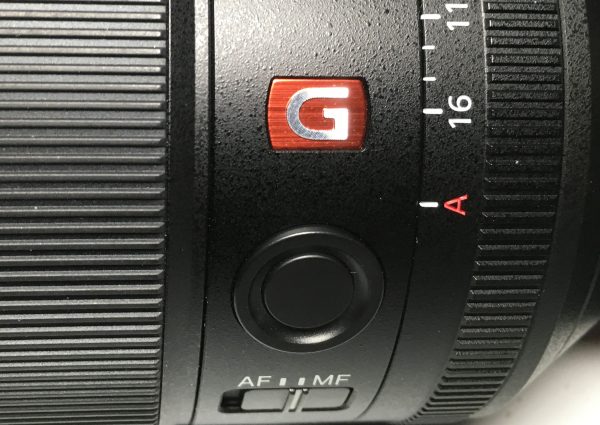
Another nice touch is that there are AF/MF selection switches on the sides of both lenses. Finally Sony’s lenses have the simple feature that most Canons have had from the beginning. With most Alpha cameras you can also assign switching from manual to AF to the custom button on the lens if you so wish. This button can also be programmed to perform other functions such as turning image stabilisation on and off, or magnifying the image to check focus.
The 24-70mm appears to be practically parfocal, holding focus as you zoom. This is especially nice to see, although I’m not sure whether this done natively by the optics, or is achieved using some electronic wizardry by lens and camera.
Both lenses are incredibly sharp and they totally out resolve the 4K video image. Stills I shot in 42 megapixel mode on my a7R II had truly amazing detail (see below). The images have fine micro contrast and virtually no chromatic aberration or edge distortion. The 24-70mm does exhibit some slight pincushion distortion but I didn’t really notice it much in practice.
Bokeh was good on both lenses, but the 85mm was really exceptional. I haven’t had a chance to test side-by-side, but I suspect it would give the Zeiss Batis and Milvus lenses a serious run for their money. To make this happen the 85mm has a whopping eleven iris blades. The 24-70mm has to settle for nine blades.
The lenses also have good close focussing abilities. The 24-70mm going as close as about 40cm, and the 85mm about 80cm.
Of course, there is the question of whether a super sharp lens is what you actually want for filmic video shooting. Many shooters will still opt for a softer, less contrasty lens with ‘character’ in preference to a more clinical modern one. But for me, what Sony have done with the bokeh and 3D-like images from these lenses goes a long way to make them more ‘lovable’ than their immediate competition.
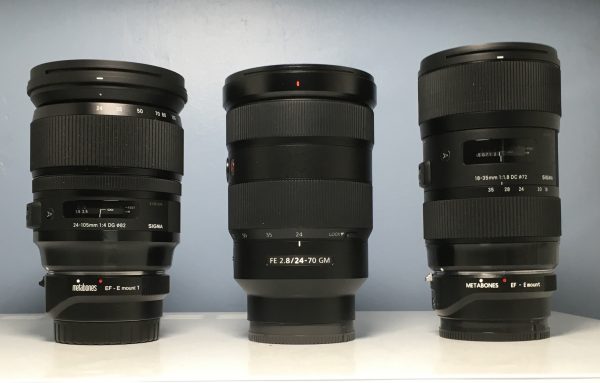
Should you go for these lenses over traditional adapted lens options from Canon, Sigma and Zeiss? I think that depends on which cameras you want to use them on. The G Master lenses are not cheap. For the price of the 24-70mm G-Master you could buy a Sigma ART or Canon prime, and a zoom as well. If you shoot on a Sony Super35 sensor camera like the FS5 or FS7 then the crop factor makes both G Master lenses reviewed less attractive (although the 70-200mm G-Master may be just the ticket). If you stick with full-frame EF, Nikon or Sony A-mount glass then you have the option to use third party adapters like the Metabones Speedbooster to get a full-frame look. You can also use those same lenses on other systems like Cinema EOS, RED, Panasonic etc.
If you primarily shoot a7S or a7S II then I think these should be at the top of your list of lenses to try. I would love it if the 24-70 G Master had true manual focus and focus markings, but it doesn’t. Optically the sister 28-135mm f4 G Power zoom lens doesn’t rival the G Master, but for operation and range it has advantages for video shooters. Where the G Masters win out is in the bokeh. Simply put, it looks great – especially with the 85mm. If you are a bokeh freak then you probably have an order in for one of these already.
Right now, the G-Masters are the ultimate lenses for full-frame E-mount shooters who need both stills and video performance. They work well for run-and-gun shooting thanks to the new manual focus system. Whether they are worth the asking price is your call.









